Contrary to popular belief, it is perfectly fine to reuse old potting soil that has had things growing in it before. Many gardeners, plant keepers, and container growers find themselves with leftover soil from year to year, sitting around in last year’s pots and growing containers (and maybe even some old bags).
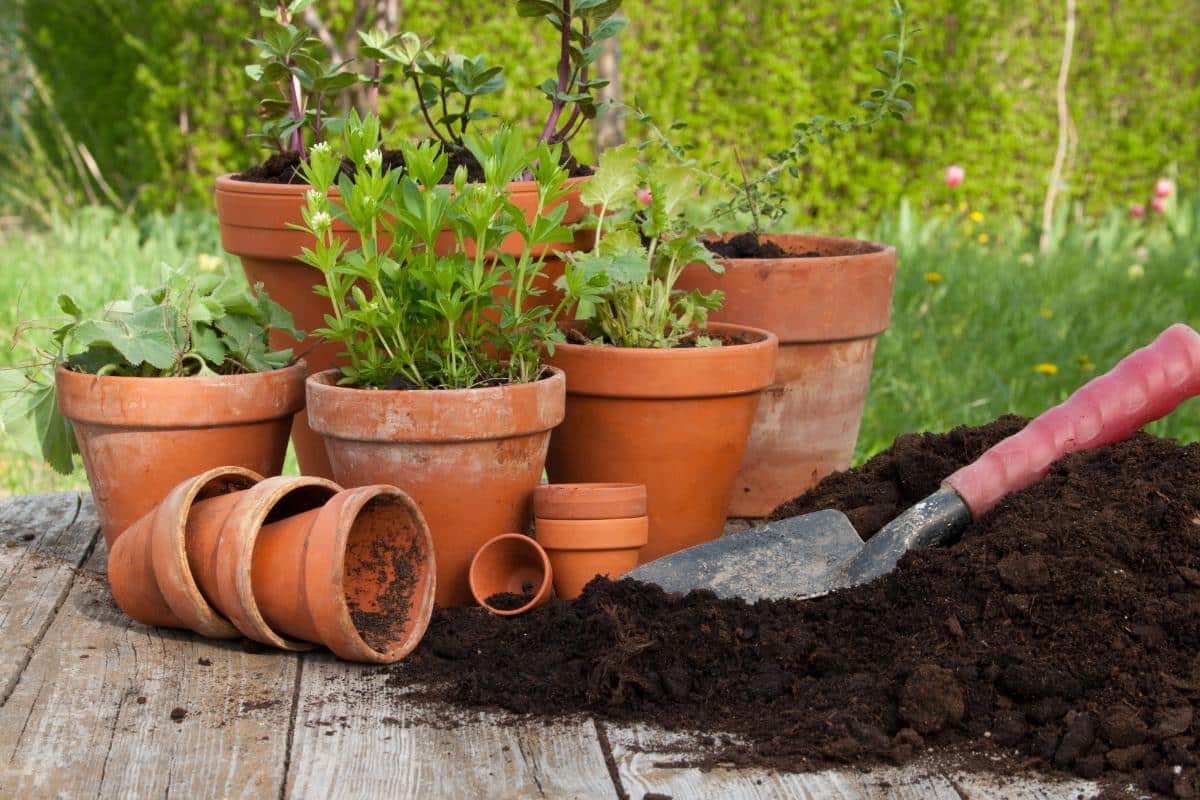
Jump to:
- Experts Say Reuse that Old, Used Potting Soil!
- Before you Sterilize Your Soil
- 3 Simple Ways to Sterilize Old and Used Potting Soil
- 1. Solarize Old Potting Soil
- 2. Bake Used Potting Soil in an Oven or Covered Grill
- 3. Microwave Used Potting Soil
- Reusing Sterilized Used Potting Soil
- Organic amendments you can add to sterile soil
- Mix in a ratio of new soil to sterile soil
- Amendments that increase drainage capabilities
- Does Old, Unused Potting Soil Need to Be Sterilized?
- A judgment call on sterilizing unused, old soil
- How Many Times Can You Reuse Old Potting Soil?
Experts Say Reuse that Old, Used Potting Soil!
It is often said that you shouldn’t reuse potting soil, but experts disagree. Louisiana State University Ag Center says it is fine to reuse old potting soil as long as the plants that were living in it before died because their lifecycle was completed, and the plants didn’t die of the disease. (For example, if the end of the season and weather killed them.)
Sterilizing the soil is a good idea, though, because, if done properly, it will kill off lingering soil pathogens, molds, fungus, and pests.
Most soil pathogens will be killed at temperatures of 140 degrees Fahrenheit or higher if heated for a long enough period, so you can sterilize old potting soil by simply heating it. There are a few ways you can do this, with or without utilities. Below, we describe three of the easiest.
Before you Sterilize Your Soil
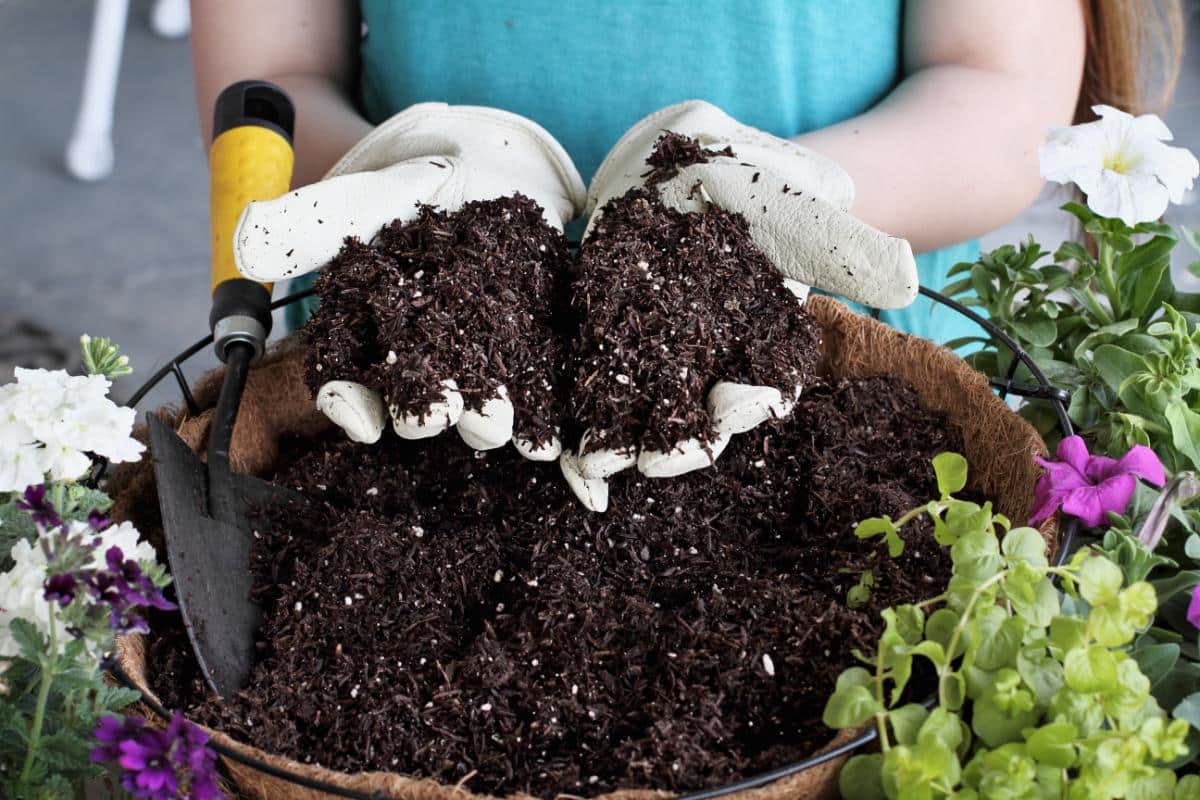
The three ways to heat sterilize potting soil are detailed below. Choose the one that is most manageable for you, but before you start, there are some things you need to do to prep the soil:
- Dump out old pots on a plastic sheet or into a plastic bin
- Remove dead roots, old plant pieces, and large detritus
- Remove any insect larva or insects that you see as best you can
- You may not be able to see insects and eggs, and that’s okay—sterilizing will kill these, too
- The most important insects to try and save are casings of dormant beneficial insects (and the good bugs themselves)
- Prep and seal the soil outside before bringing it inside your home to heat (if you are choosing an indoor method) -- this will keep any missed bugs sealed up, and they will be killed in the heating process
- While the pots are empty, clean and sterilize them, too—a light bleach solution will do the trick
3 Simple Ways to Sterilize Old and Used Potting Soil
You can either use your household (or yard) appliances to sterilize potting soil, or you can put the sun to work for you. Here are three easy ways to kill seeds and pathogens in potting soil:
1. Solarize Old Potting Soil

This method uses the power of the sun to sterilize your potting soil. It’s as easy as tying up your soil in a bag!
- After removing dead plant parts, grubs, and insects, dump the soil into a heavy black contractor bag or into a large tote that can be covered and sealed
- Seal the bag or tote(s) tightly
- Set the bag or tote in a warm, sunny place and leave it there for four to six weeks
- If the weather is cold and you have the option, it is a good idea to leave the solarizing soil in the sun in a greenhouse or covered cold/hot frame so that it can get up to the temperature
It should be noted that this long solarization process will continue to break down organic matter that is in the soil, similar to how the heat in a compost pile breaks down organic matter. That means that with this method, you’re likely to lose organic matter and beneficial elements like mycorrhizae, so the soil will benefit from some amendment when you use it (see the section below on reusing sterilized soil).
2. Bake Used Potting Soil in an Oven or Covered Grill
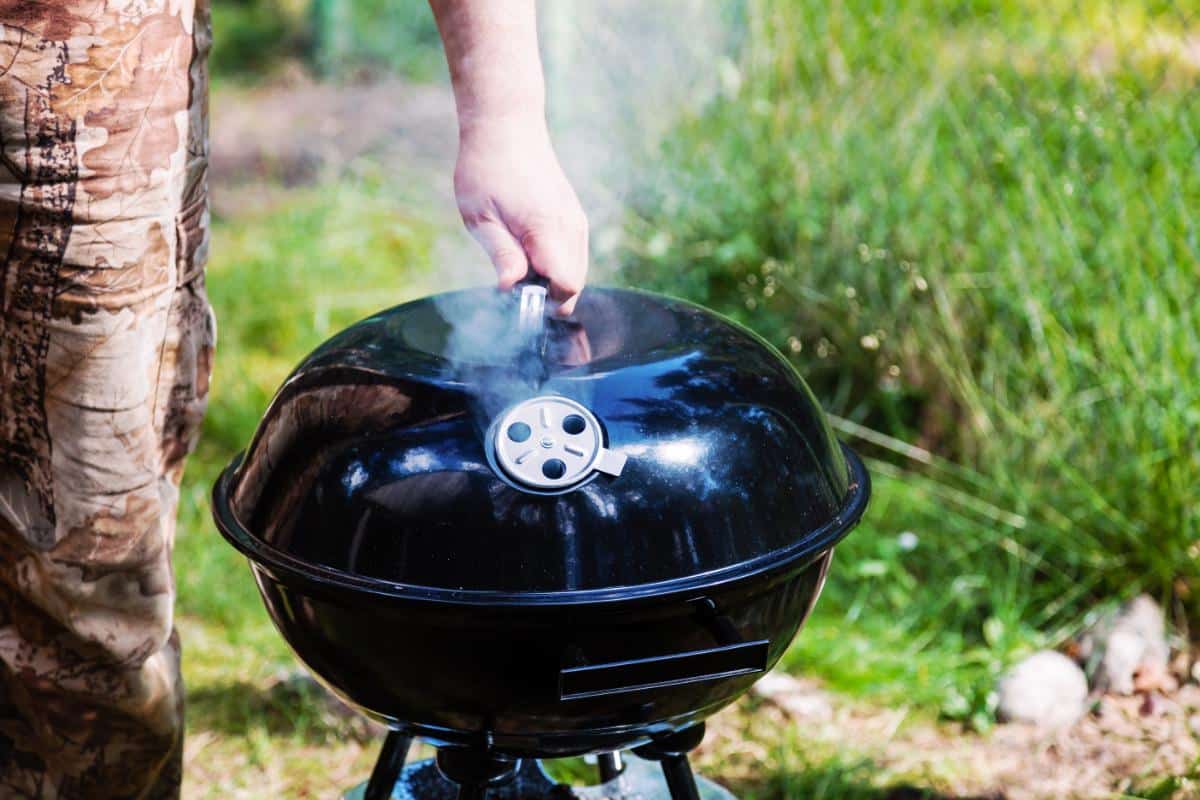
Solarization is easy, works well, needs no utility input, and keeps the mess outside, but the drawback to it is that it takes a long time – a month to a month and a half. You may not want to wait that long to use your potting soil.
You can speed this process up by simply heating your old, prepped potting soil in your oven – baking it, basically.
Baking potting soil will, of course, give off a rather earthy scent that turns some people off, and you may not want to have dirt in your kitchen oven, so you can also do this outside if you have a covered grill. Either way, the process is the same; it’s just a matter of doing it indoors or out:
- Place the potting soil in an oven-safe pan
- If you don’t want to use your cookware, disposable baking pans or a disposable roasting pan can be used
- Seal the pan of potting soil with aluminum foil
- Place the sealed pan in the oven
- Preheat your oven or grill to 200 degrees Fahrenheit (93 C)
- Heat at a temperature of 200 F (93 C) for 30 minutes
- If using a grill, keep the cover closed while heating to hold in the heat and act like an oven
- Cool before using
3. Microwave Used Potting Soil

This option is only practical if you just have a small amount of used potting soil that you want to sterilize.
- Prep the soil to remove plant detritus and insects
- Put soil in a microwave-safe container
- Only heat up to 2 pounds of soil at a time
- Heat on full power for one and a half minutes
- Cool before using
Reusing Sterilized Used Potting Soil
One of the issues with reusing old used potting soil is that the nutrient content is depleted after a season of growing. For this reason, you will need to add back in some nutrients and organic matter to both bulk up the depleted soil and enrich it so that the plants you plant into it have enough nutrients to grow and thrive.
So, while your newly sterilized potting soil is now safe to reuse without worrying about fungus, insects, and diseases, it will need some amendment to make it a good place for plants to live.
Organic amendments you can add to sterile soil
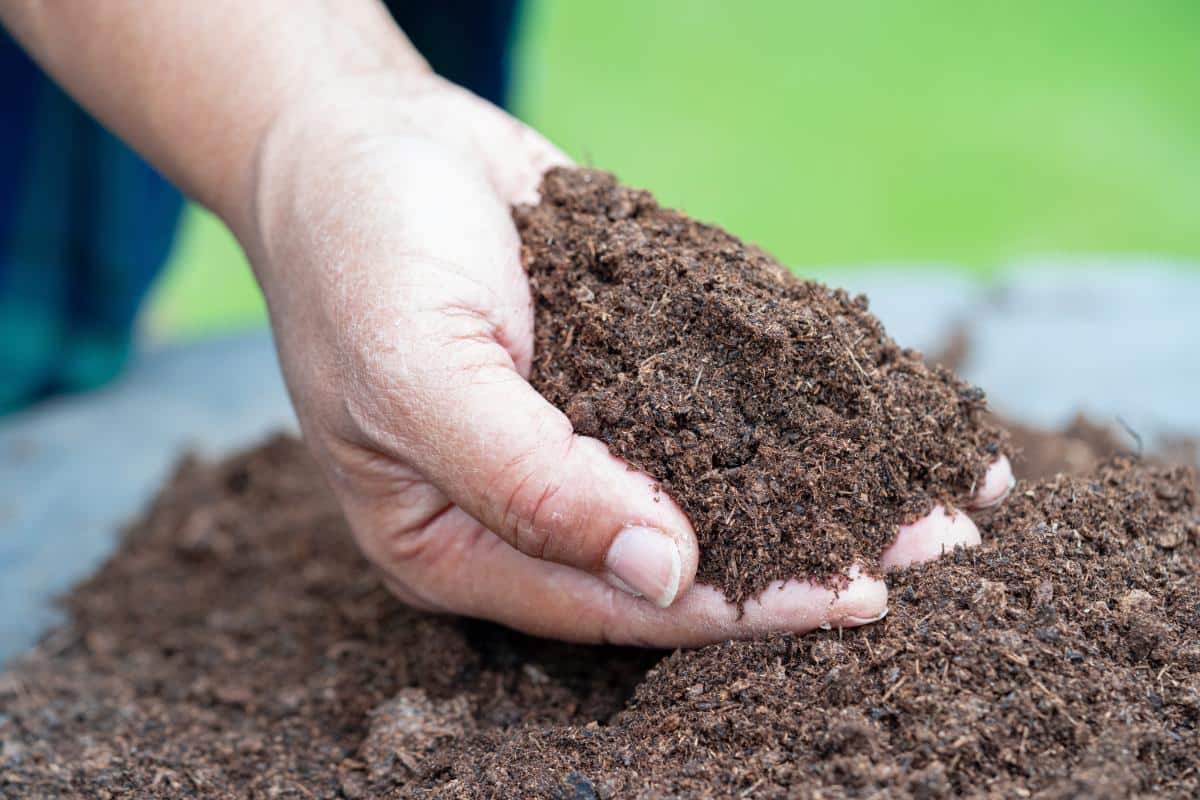
There are several amendments that you can add to the soil:
- Fresh potting soil*
- New compost
- Composted manure
- Peat moss
- Mycorrhizae
- Bagged topsoil (garden soil is not recommended because it is too dense)
- Worm castings
- Mushroom compost
- Wood ash
- Biochar
Mix in a ratio of new soil to sterile soil
One of the best ways to refresh your sterilized potting soil and restore nutrients is to buy a bag of new potting soil and mix it into the old, which also helps to replenish organic matter.
- Mix new potting soil into old at a rate of 1 to 3
- In other words, use one part of new soil for every two parts of old
- Put another way, mix about 30% new soil into old, sterilized soil
- You can mix in more if you want – you can’t add too much new soil
Amendments that increase drainage capabilities
If you need to increase the drainage capability of the potting soil, you can add one of the following:
- Sand (use in small amounts—sand makes containers heavy!)
- Vermiculite
- Perlite
Does Old, Unused Potting Soil Need to Be Sterilized?

It’s not as important to sterilize old leftover potting soil that hasn’t been used, but it isn’t a bad idea to sterilize it, either. For leftover potting soil that is still in the bag, you could go either way.
Open bags of potting soil can benefit from sterilization because they are still exposed to mold, fungal spores, and contamination from rodents, dropped seeds, etc. The high heat of sterilization will typically kill seeds as long as the internal temperature of the soil reaches at least 130 to 145 degrees Fahrenheit (54.5 to 63 C).
Some sources recommend throwing out old potting soil and starting fresh, but that’s a complete waste of perfectly good potting soil. Especially when the solution is so simple – if in doubt, sterilize the soil.
A judgment call on sterilizing unused, old soil
Well-sealed bags and unopened bags of potting soil don’t necessarily have to be sterilized, though even unopened bags can become wet and moldy, and it is possible for fungus to grow there (which may be good or bad fungus).
Fungal gnats are common in bagged potting soil, and heating and sterilizing will kill gnats, larvae, and eggs, so again, it’s not a bad way to go, but not completely necessary, either.
Unused soil, even if it is sterilized, does not need to be refreshed or amended to replenish nutrients and minerals, but the same temperatures that kill “bad” molds, bugs, and funguses also kill “good” mycorrhizae. It’s something to consider while you’re deciding whether or not to sterilize your soil.
You can also inoculate sterile soil with mycorrhizal inoculant or mix in a bit of potting mix that contains mycorrhizae to rebuild this good fungus (though plants can grow without it, too – it's just a big boost to roots and nutrient uptake).
Deciding whether to sterilize unused old potting soil is a judgment call when it comes down to it. If the soil looks and smells fresh and you are sure it’s not contaminated with weed seed, et cetera, it’s probably unnecessary, but if the soil seems off, sterilizing is a good idea.
How Many Times Can You Reuse Old Potting Soil?
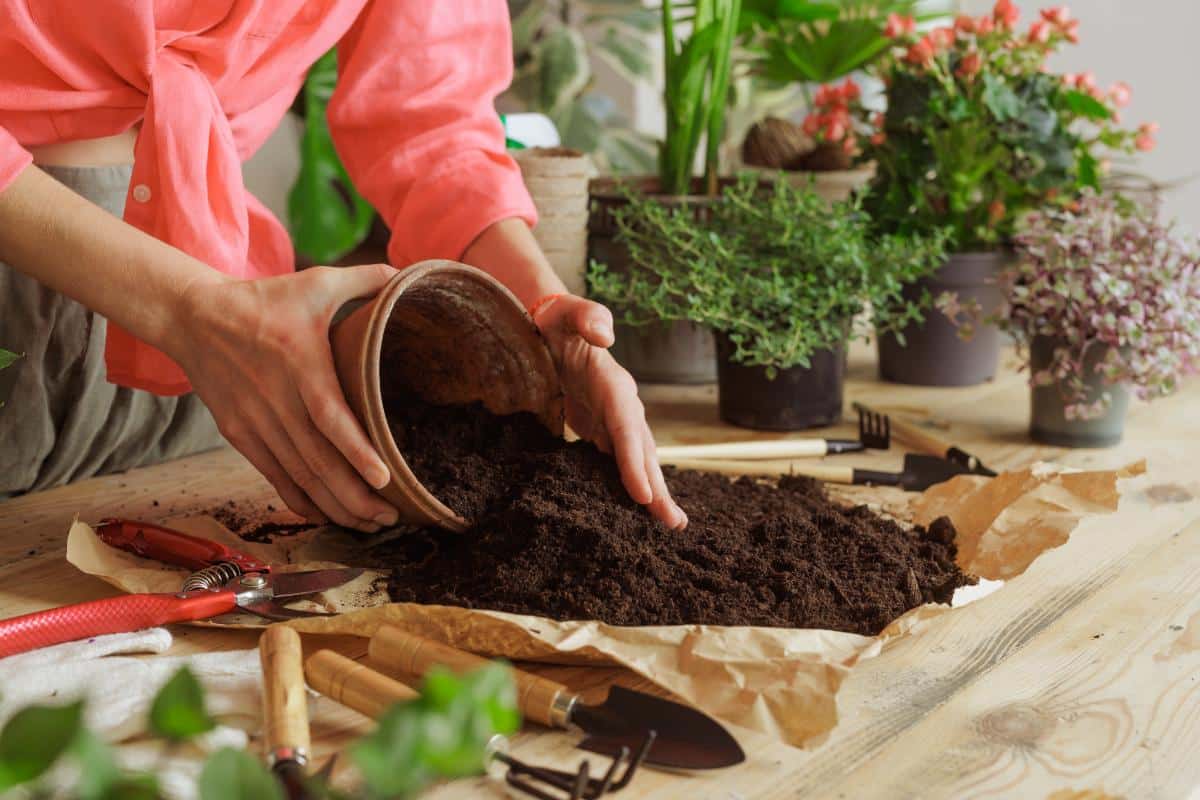
You can’t expect to reuse old, used potting soil indefinitely. Eventually, it just won’t have anything left to give, and it will lose its lightness. Then it will become too compacted, which means it will drain poorly.
Plan to reuse your old potting soil for only one to two years. After that, it’s best to rotate in some new soil and start again.
Here are some tell-tale signs that your old soil needs to be replaced:
- Soil has lost its fluffiness
- Soil cannot be “refluffed” even when you dump it and rake through it with a hand rake
- Soil clumps solidly
- Soil is hard and does not break apart easily
- Plants grown in the soil fail to thrive and do not grow well
- Soil does not smell earthy and natural
- The soil smells rotten, or there are foul odors in the soil
- The soil has large white or gray patches in it or on the surface (such as mold, hard minerals, or salt deposits)
- There is little brown organic matter visible in the soil
Even if you decide the soil is too old to use, that doesn’t mean that old soil should go to waste! In addition to repotting into old soil, there are many places around the yard and garden where you can put that old, spent soil to good use.
Find more good ways to up-cycle old soil in our article, Great Ways To Reuse Old Potting Soil.

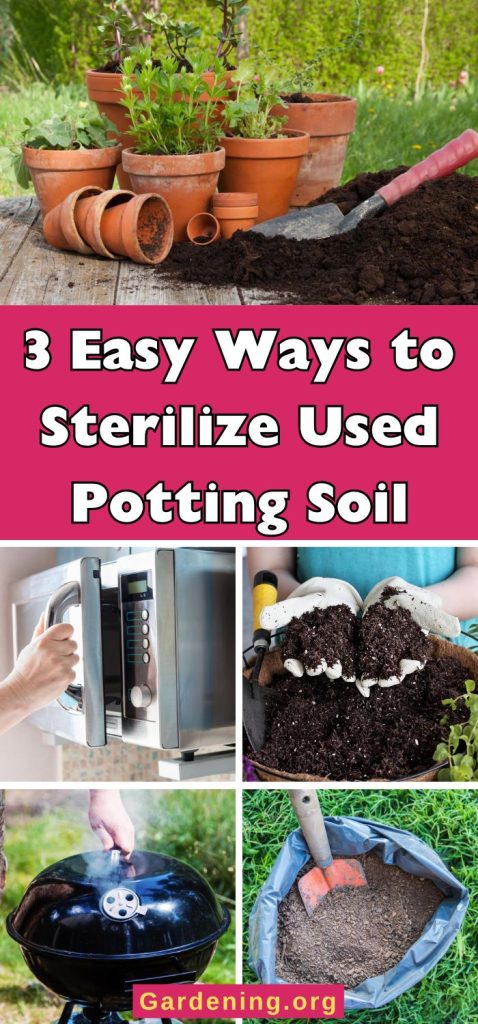
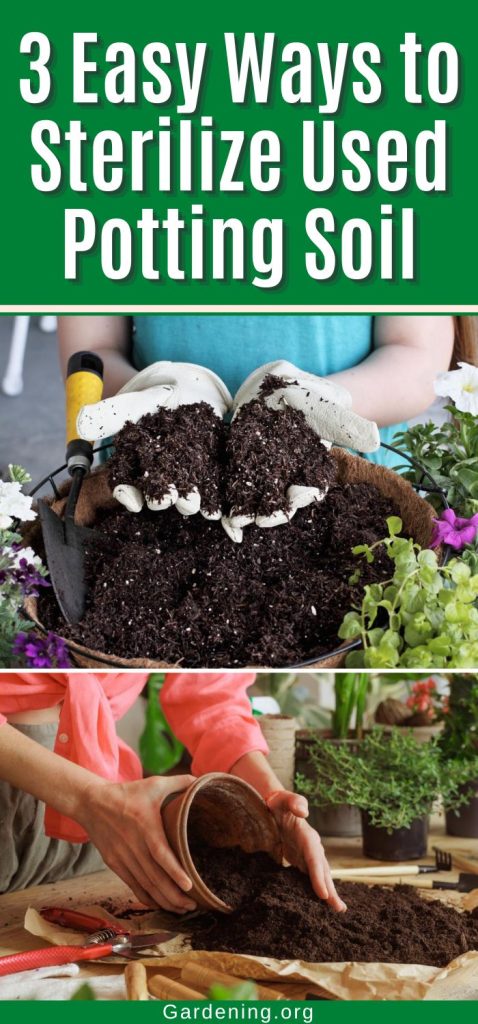
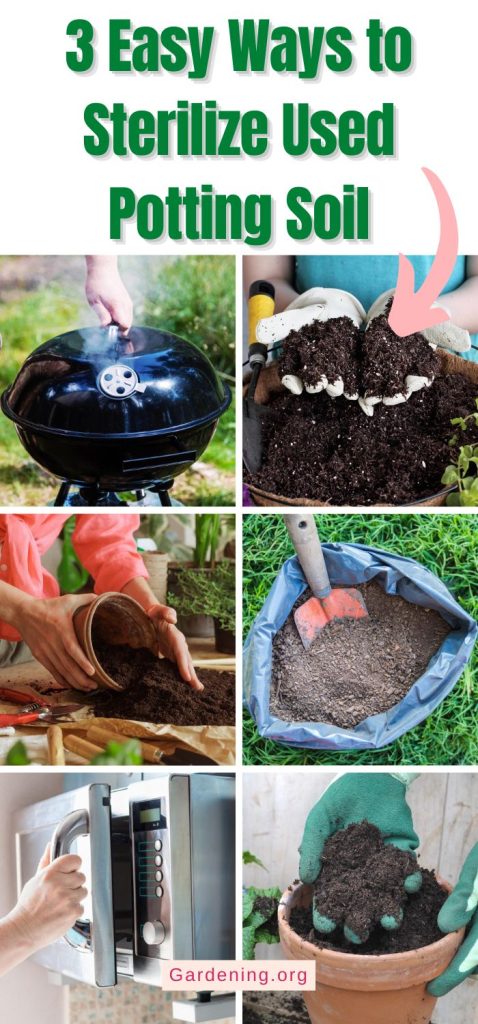
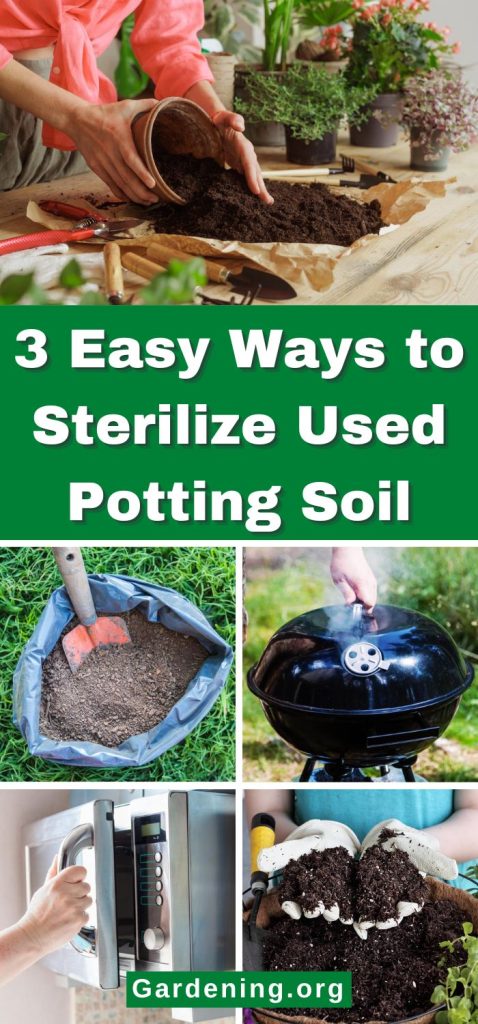




Denise Acebo
Great news for gardeners! Thank you!